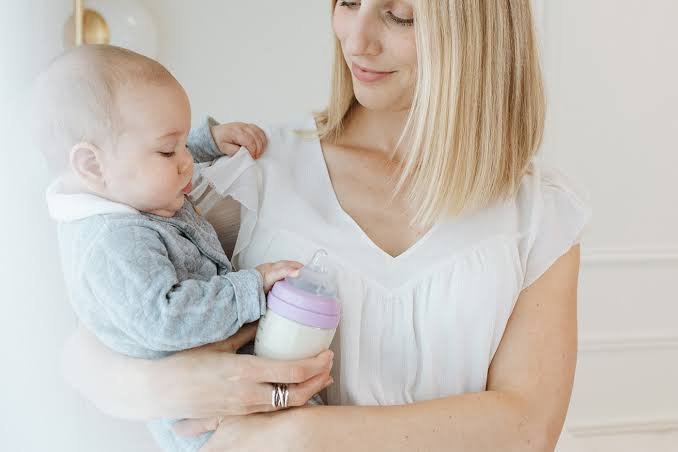Selecting the right feeding products for newborns is one of parents’ most important decisions. Feeding tools must be safe and effective to ensure the well-being and comfort of the baby. Finding products that support the baby’s natural feeding habits is especially crucial for breastfeeding parents. One common concern is how to transition smoothly between breastfeeding and bottle feeding. Below are several key factors parents should consider when choosing feeding products for their newborns.
Prioritize Safety in Materials
The safety of the materials used in feeding products should always be a top priority. Parents must ensure the bottles and nipples are made from non-toxic, BPA-free materials. BPA (bisphenol A) is a chemical in some plastics that could be harmful, especially to newborns. Opting for products labeled as BPA-free or using glass bottles can provide peace of mind. Choosing easy-to-clean and sterilized products is also important, as this reduces the risk of bacterial growth. To ensure the best for their babies, parents should consider brands like Dr. Talbot’s, which is known for providing feeding products made from non-toxic, BPA-free materials, ensuring peace of mind during feeding time.
Look for Products That Mimic Natural Feeding
For parents who are breastfeeding, finding products that mimic natural feeding is key. Breastfed babies may struggle to switch between the breast and the bottle if the bottle’s design is too different. Nipples designed to resemble the mother’s breast can help ease this transition. These bottles allow the baby to latch on similarly to how they would during breastfeeding, which reduces nipple confusion and helps maintain a regular feeding routine. Ensuring a smooth transition between breastfeeding and bottle feeding is easier when parents find the best baby bottles for breastfed babies, as this helps keep babies comfortable and properly fed.
Choose a Bottle with Slow-Flow Nipples
Newborns, especially those who are breastfed, need bottles with slow-flow nipples. Slow-flow nipples control the pace at which milk flows from the bottle, making it easier for babies to drink without choking or overeating. This design mimics the natural pace of breastfeeding, where the baby has to suck harder to get milk. Using slow-flow nipples helps babies control their intake, which reduces the risk of colic and gas. Parents should always check the packaging to ensure the flow rate is appropriate for their newborn’s age.
Check for Anti-Colic Features
Colic can be a frustrating experience for both parents and babies. Some babies develop gas or colic from swallowing too much air while feeding. To prevent this, parents should look for bottles with anti-colic features. Many feeding bottles now come with vents or systems designed to minimize the air the baby takes in during feeding. These anti-colic bottles help reduce gas and fussiness, making feeding times much more comfortable for the baby and less stressful for parents.
Select a Bottle Size Appropriate for Newborns
When choosing feeding products for newborns, it’s essential to select a bottle size that is appropriate for their small stomachs. Newborns typically drink smaller amounts of milk, so using smaller bottles helps ensure proper portion control. Bottles that hold around 4-5 ounces are generally the right size for newborns. Parents can switch to larger bottles as the baby grows to accommodate their increasing milk intake. Starting with smaller bottles helps prevent overfeeding and makes it easier for the baby to handle during feeding.
Consider Ease of Cleaning and Sterilizing
Newborns have delicate immune systems, so keeping their feeding products clean and sterilized is critical. Parents should choose bottles and nipples that are easy to disassemble, clean, and sterilize. Bottles with wide necks are easier to wash, providing better access for cleaning brushes. Many bottles are also designed to be dishwasher-safe or compatible with steam sterilizers. Ensuring that the feeding products are easy to clean helps reduce the risk of bacteria and germs, keeping the baby healthy.
Evaluate Comfort and Grip for Parents
While the baby’s comfort is the main concern, it’s also important to consider the comfort and ease of use for parents. Bottles that are ergonomically designed, with easy-to-hold grips, make feeding sessions less tiring for parents. A bottle that feels comfortable in the hand allows parents to focus more on feeding and bonding with their baby rather than worrying about dropping the bottle. Finding products that balance the baby’s needs and the parent’s comfort can lead to more enjoyable and stress-free feeding sessions.
Monitor the Baby’s Response to the Bottle
Every baby is different, and not all feeding products will work for every child. Once parents have selected a bottle and nipple, it’s important to monitor the baby’s response during feeding. If the baby seems uncomfortable, gassy or refuses to drink from the bottle, it may be a sign that a different type of nipple or bottle is needed. Parents should be patient and willing to try a few options until they find the one that works best for their baby. This trial-and-error approach ensures that the baby is comfortable and well-fed.
Choosing safe and effective feeding products for newborns requires careful consideration of both the baby’s and the parent’s needs. By focusing on safety, looking for products that mimic natural feeding, and selecting bottles with slow-flow nipples and anti-colic features, parents can make feeding times smoother and more comfortable. Finding the best baby bottles for breastfed babies may take some time, but with the right tools, parents can ensure that their newborns receive the nourishment they need most safely and comfortably possible.
Passionate content writer and savvy blog publisher, Aamir crafts compelling stories and insightful articles that captivate and inform. With a knack for blending creativity and strategy, they bring fresh perspectives to every piece. Dive into their world of words and discover content that resonates.





